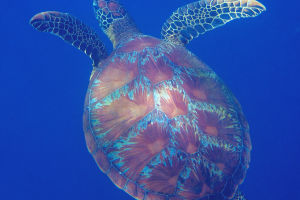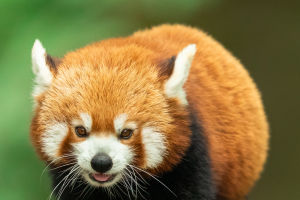Know Hippocampus
Hippocampus (Latin name: hippocampus), is the collective name of several small species of warm sea fish in the order Hyacinthidae of the order Spinefish. It is a small marine animal with a body length of 5 to 30 cm. It is named after the head is bent at a right angle to the body.
The head is horse head-shaped and forms an angle with the body. The snout is long tubular, the mouth is small, and a dorsal fin is composed of fin rays. The eyes can move independently.
small, and a dorsal fin is composed of fin rays. The eyes can move independently.The hippocampus is slow, but it can effectively capture the fast-moving and hiding copepods, which are distributed in the Atlantic Ocean, Europe, the Pacific Ocean, and Australia.
The male and female identification of seahorses and sea dragons is very simple, that is, males have abdominal sacs (commonly known as: pouches), while females do not have abdominal sacs.
It's true that male seahorses never play with their young, but they outperform human fathers in producing offspring in another way. Seahorses are the only animals on the planet whose offspring are produced by males.
Seahorses are the only fish that can only swim upright. Normally, seahorses eat the smallest crustaceans and small animals that swim in the water. Because the swimming speed of the seahorse is not fast and there is no defense ability, it has to disguise itself as much as possible in the cruel living environment to avoid being attacked by the enemy. It often wraps itself around seaweed or rocks with its long, slender tail that curls into a spiral, and its oddly colored skin looks like a pile of seaweed or a rock to enemies.
However, the seahorse also has its own natural enemies, no matter how it disguises itself, it cannot escape the palm of the lobster. Because when the lobster is foraging, no matter what it is, it will be picked up and put into the mouth to taste, and the seahorse has become a delicious meal for the lobster.
Characteristics of various seahorses:
1. The linear hippocampus is prolate and curved, with a body length of about 30 cm. The surface is yellowish white. The head is slightly like a horse's head, with a coronal protrusion, a long tubular snout, a small mouth, and deep-set eyes. The trunk is seven prismatic, the tail is four prismatic, tapering and curly, with corrugated knots and short spines on the body. Body light, bone hard. Gas slightly fishy, slightly salty taste.
2. The three-spot hippocampus has a black spot at the base of the short spines of the first, fourth and seventh segments on the back of the hippocampus.
3. The spine hippocampus is 15 to 20 cm long, and the spines between the head and the upper part of the body are thin and sharp, and the tips are dark brown.
4. The seahorse is 20 to 30 cm long, dark brown, with small dark or silvery white spots on the head and side of the body.
5. The small hippocampus is small in size, 7 to 10 cm long, dark brown, with short and short knots.


